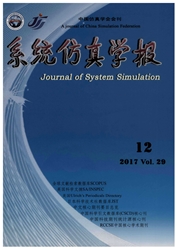

 中文摘要:
中文摘要:
L-系统是植物模拟的重要方法之一。然而用L-系统模拟既有弯曲又有扭曲的枝条,需要大量的产生式,并且很难提炼出这些产生式。通过把空间曲线理论同L-系统相结合,将L-系统的表示图形的字符联系了曲率函数和挠率函数,并且对L-系统中的字符进行了新的龟解释,得到了三维函数L-系统。使用三维函数L-系统绘制既有穹曲又有扭曲的枝奈的植物时,L-系统筒洁,参数解释自然,同时在编程时,容易控制枝条的长度.实验结果表明,通过调整函数L-系统中的曲率函数和挠率函数可以得到拓扑结构相同但形态差异较大的树。
 英文摘要:
英文摘要:
L-system is one of the important methods of plant simulation. However, when applied to model plants with bending and twisting branches, it requires a large number of productions which are difficult to find out. The L-system symbols, which are on behalf of graphics, were associated with curvature functions and torsion functions, and the new turtle interpretations to the symbols in the 3-D L-system were given. An extension of 3-D L-system, named as 3-D functional L-system, was proposed by combining L-system with the space curve theory. When 3-D functional L-system is used to model plants with bending and twisting branches, the system is concise, the parameters can be well interpreted and the length of the branches can be easily controlled in programming. The paradigms indicate that various trees with the same topological structure and significantly different shapes could be produced by adjusting the curvature functions and torsion functions in the 3-D functional L-system.
 同期刊论文项目
同期刊论文项目
 同项目期刊论文
同项目期刊论文
 期刊信息
期刊信息
